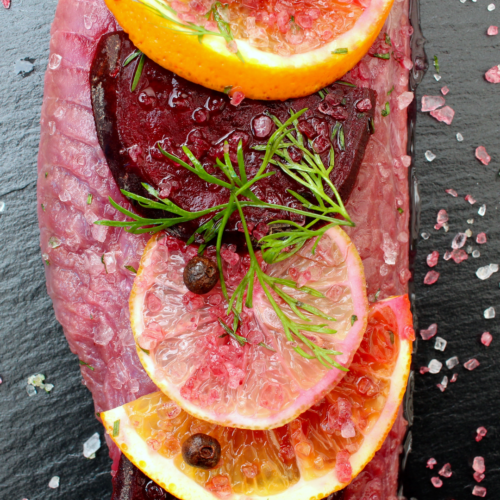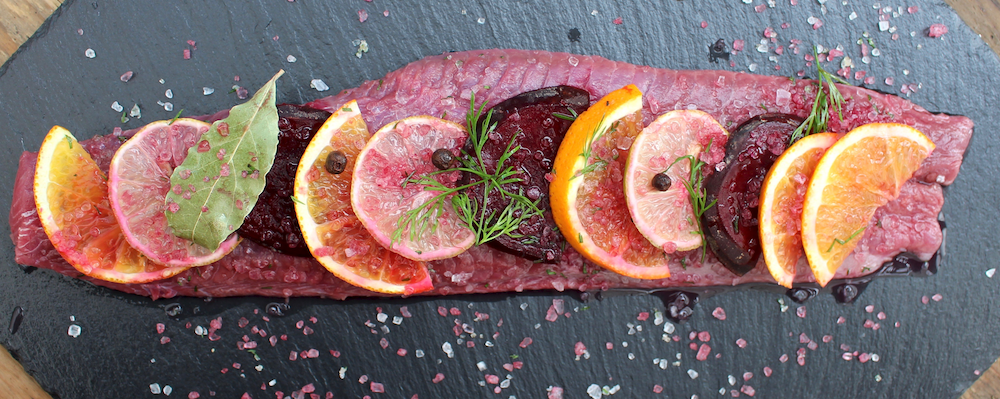Go to Cart 0,00 €
0Cooking fish: Pickling
Roasting, steaming, grilling – there are many ways to cook fish. A rather rare method is pickling. Here you can prepare pickled fish yourself with relatively little effort. And it’s worth it, because pickling not only makes the fish last longer, but also makes it particularly tender and tasty. Try it out!
What does pickling with fish mean?
Pickling is a great way to refine fish and at the same time make it more durable. A distinction is made between wet and dry pickling, with dry pickling being the better known method. Salt is the most commonly used. It extracts water from the fish and makes it keep longer.
Which fish are suitable for pickling?
The classic is the “Graved Salmon”. Salmon used to actually be buried in the ground with a mordant of salt, sugar and dill. Today, although a spade is rarely used, pickled salmon is a popular delicacy. But trout, char or catfish are also fantastic for pickling. Important when choosing fish is a relatively high fat content and a firm structure.
Ingredients for pickled catfish
500 g catfish fillet with skin
70 g sea salt
30 g sugar
Herbs and spices:
1/2 tablespoon juniper berries
1/2 tablespoon of pepper beans
1/2 tablespoon coriander seeds
1/2 bunch dill
Fruit and vegetables:
1 orange
1 lemon
1 beetroot

Stained catfish: How it works
- Preparation: Rinse fish fillet cold and dab dry. Depending on the fish, remove the remaining bones with tweezers if necessary. Catfish fillets are usually boneless.
- The marinade: Place the fillet with the skin side down on a cling film. The salt and sugar stain is applied to the fleshy side. Make sure that everything is well covered. Spread the spices and thin slices of beetroot, lemon and orange evenly on top. Then wrap the fillet in cling film.
- Storage: Place the fish wrapped in foil in a shallow bowl or casserole dish and place in the refrigerator for at least two days. It is important to weigh the fillet down with weights during the storage period, e.g. with a wooden board and tins. During the storage period, some pickling liquid will form at the bottom of the bowl.
- Washing off: After pickling, the complete pickling solution must be removed if possible. To do this, wipe off the herb-salt layer with a knife and dab the rest clean with kitchen paper.
- Shelf life: Store the pickled fish in the refrigerator. Here it will keep for at least 7
What goes with pickled fish?
Traditionally, pickled fish is sliced diagonally and as thin as possible. However, it can also be served in larger pieces or processed into tartar.
A honey-mustard sauce goes very classically with marinated catfish. But also as a noble fish roll or as light finger food it is a real pleasure.

